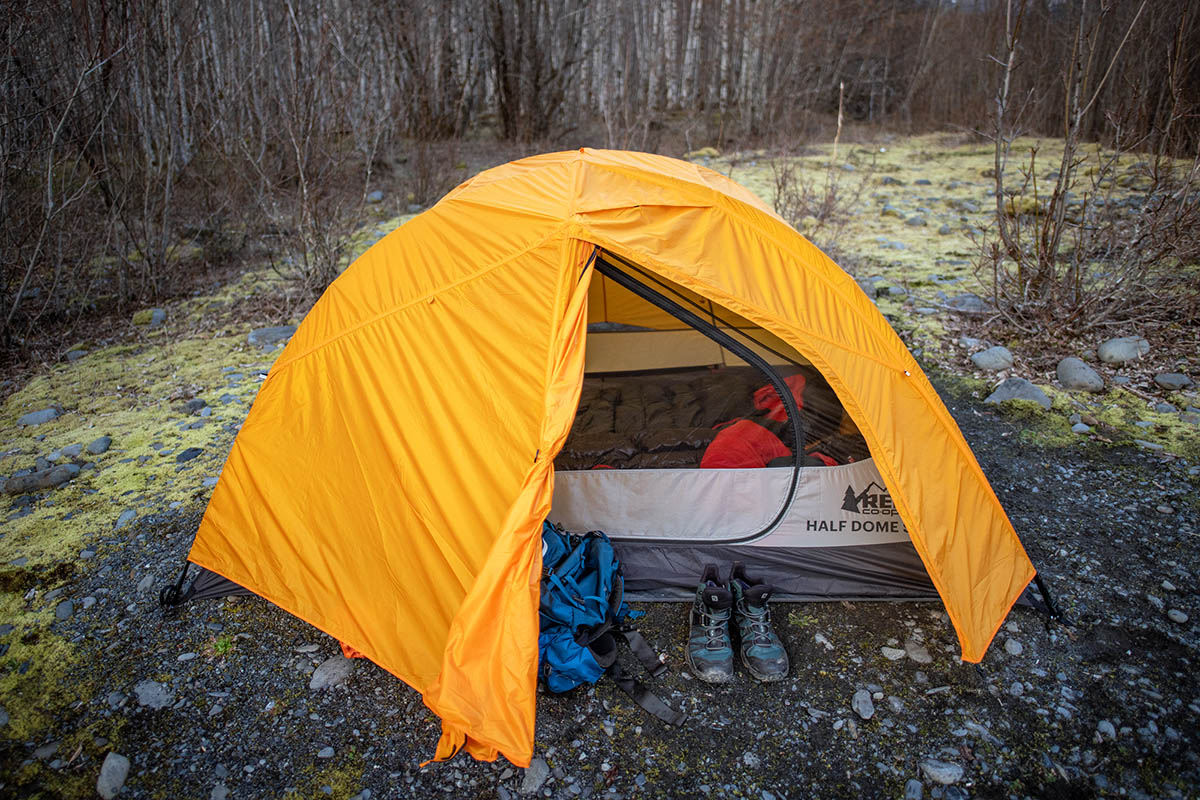
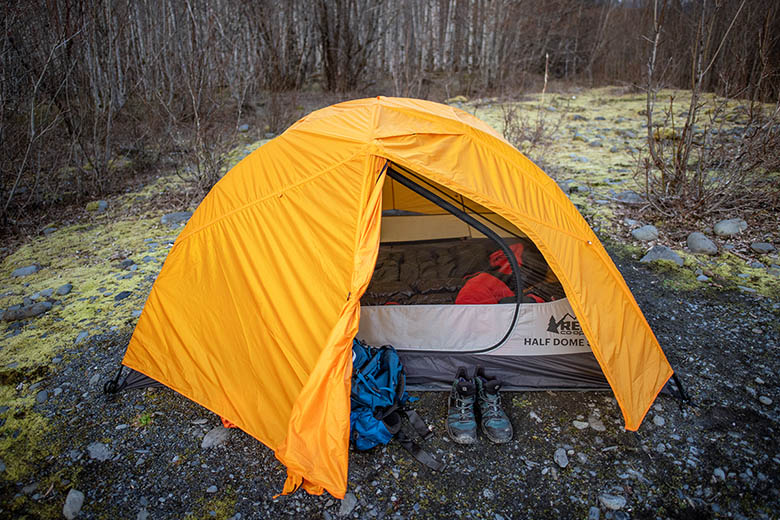
Price: $349
Measured weight: 5 lbs. 0 oz. (w/footprint)
Floor denier: 40D
Capacities: 2+, 3+
What we like: Well-built, easy to use, and tons of room at a good price.
What we don’t: Relatively heavy and only comes in “plus” sizes.
See the REI Co-op Half Dome SL 2+
Beloved by backpackers for years, REI Co-op’s Half Dome was updated a couple seasons ago with a significant drop in weight. But despite using thinner fabrics (they’re still tough by modern standards), the latest SL+ model remains a backcountry favorite: It’s extremely roomy inside, easy to set up and use, has every feature you need for 3-season adventuring, and is a solid value. We put the Half Dome SL 2+ to the test in Washington’s Hoh Rainforest, and below we break down our experiences. To see how the Half Dome stacks up, see our articles on the best backpacking tents and budget backpacking tents.
Editor's note: Our review below covers the past-generation Half Dome SL 2+, and REI recently updated the design with changes to the material quality, interior space, and pole structure. We haven’t had a chance to test the latest version yet but will update this review with our feedback once we do.
Like the prior-generation “Plus” model, the latest REI Co-op Half Dome SL 2+ is an absolute standout in terms of interior space. The expansive 33.7-square-foot floor is roughly 3 square feet larger than most of the competition (more on this below), and we found that it accommodates two regular backpacking pads with inches on all sides to spare. Further, the floor is symmetrical (nice for sleeping head to foot with a backpacking partner), the ceiling is tall at 42 inches in the center, and the vertical mesh side walls only enhance the roomy and spacious feeling. This all adds up to an honest-to-goodness livable option for two people, something almost no other two-person backpacking model can claim (those that are worried about space commonly size up to a three-person tent).
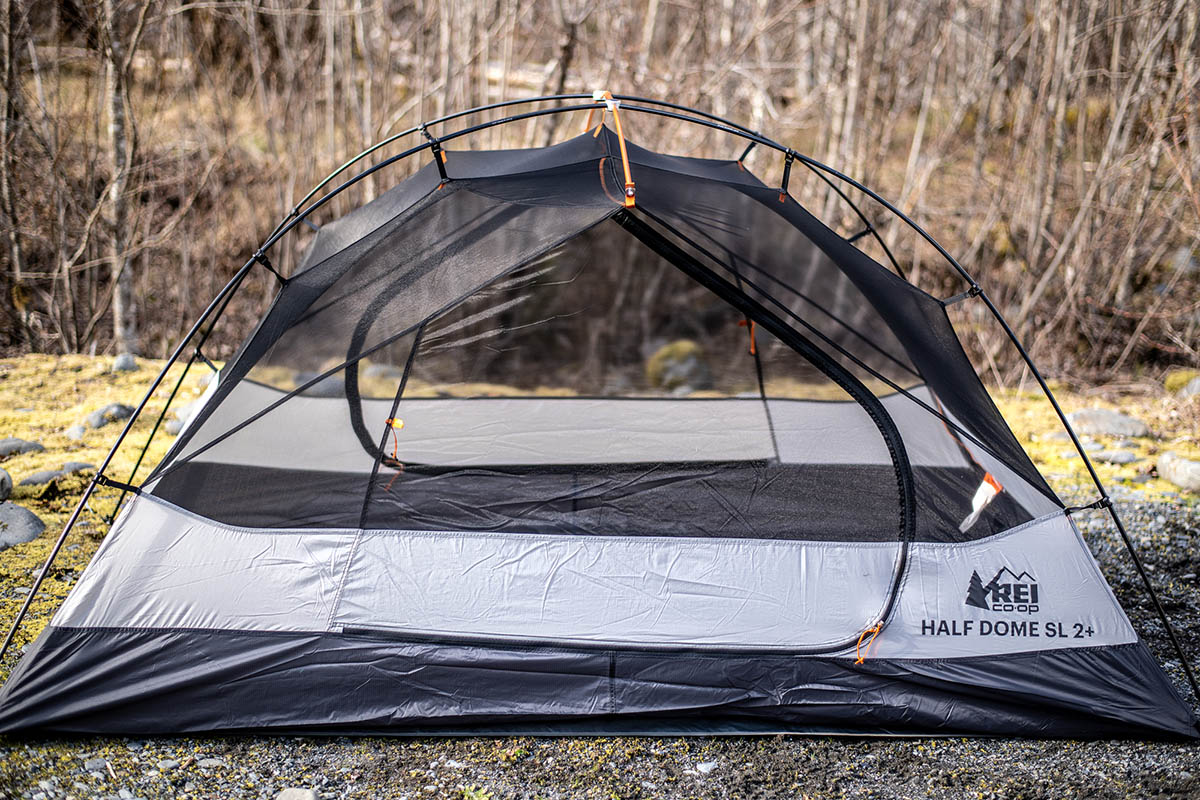
All that said, it’s worth noting that like every other backpacking tent we’ve tested, the Half Dome’s interior dimensions measure noticeably smaller than the listed numbers. At the corners, the floor is 88 inches long and 52 inches wide (compared with the 90 x 54 in. specs), which makes it difficult to fit two “wide” 25-inch backpacking pads—it's doable but you can expect the sides to be right up against the walls. To be clear, the Half Dome is a class leader in livability, especially when you consider its reasonable weight. But those looking to really spread out may still want to size up to the larger SL 3+ model (dimensions are listed at 90 x 78 in. with 48.7 sq. ft. of floor area and a 44-in. peak height).
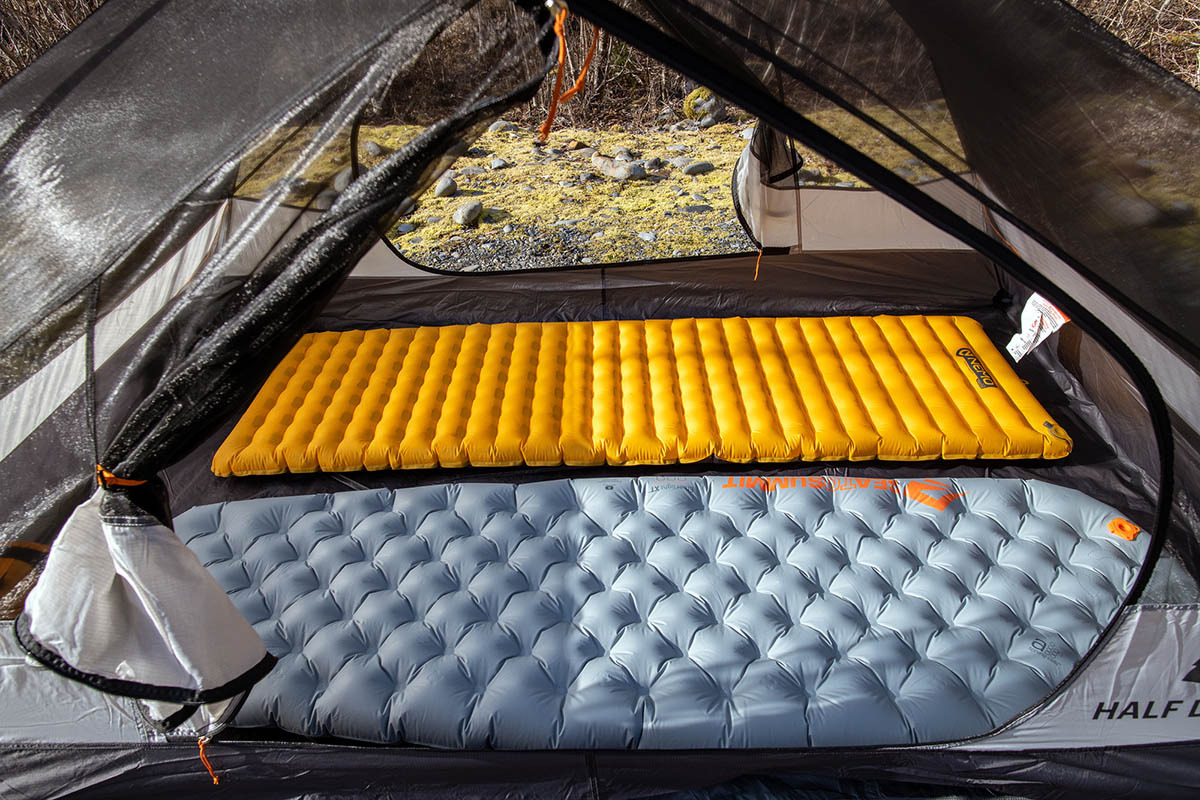
The Half Dome prioritizes interior space and durability over weight, and even though the SL model is much lighter than its predecessor, it’s still on the heavy end of the market. On my scale, the full packaged weight of the tent is 5 pounds even (its listed weight is 4 lbs. 11.5 oz., and the past-generation model was 5 lbs. 5 oz.).
It’s worth noting that the 5-pound number includes the footprint, so you can trim away 7.8 ounces by leaving that behind. And since most tents do not include footprints, you should subtract the footprint’s weight when comparing specs. For reference, leading backpacking tents like the Nemo Dagger 2P (4 lbs. 2 oz.) and MSR Hubba Hubba (3 lbs. 4 oz.) undercut the Half Dome significantly, but they also cost hundreds more and use thinner and less durable materials. Within the sub-$350 category, Mountain Hardwear's Mineral King 2 w/Footprint (6 lbs.), MSR's Elixir 2 (6 lbs.), and Nemo's Aurora 2P (5 lbs. 7 oz.) can't match the Half Dome's combination of weight and roominess.
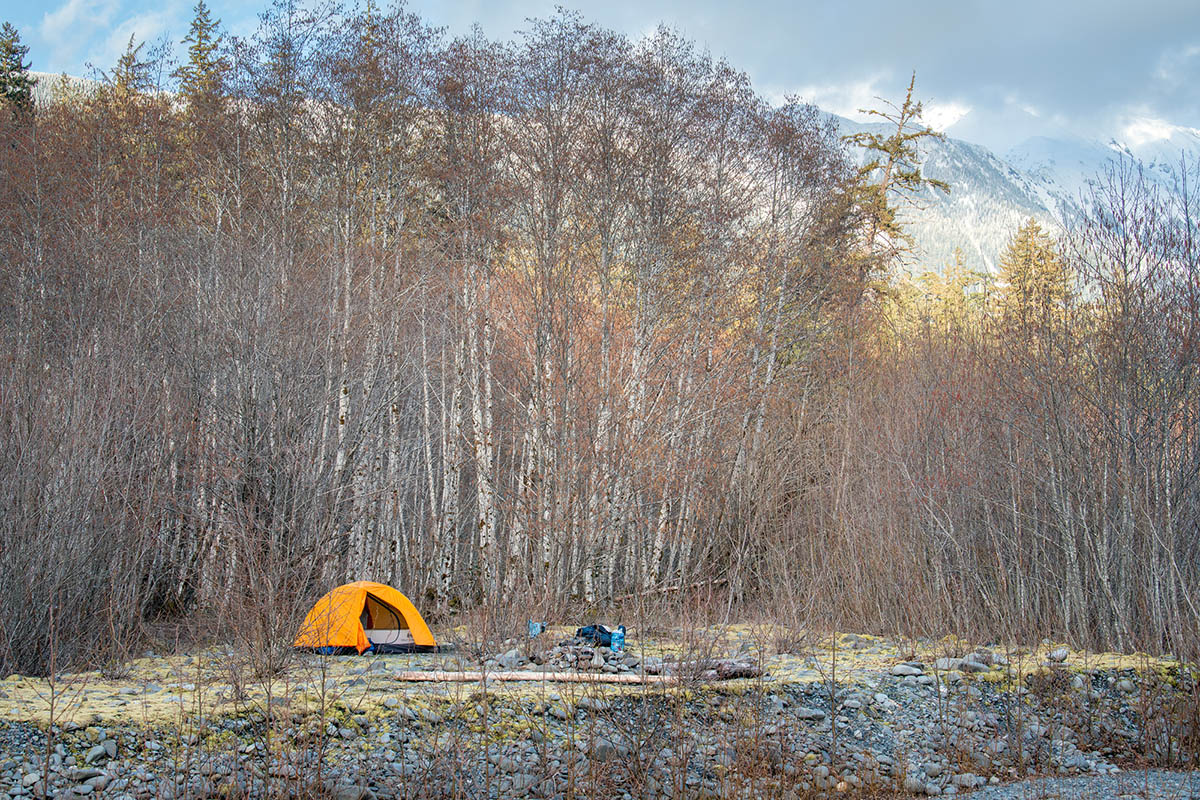
Packed size nearly always goes hand-in-hand with weight, so it’s not a surprise that the Half Dome measures a fairly large 7 x 20.5 inches. One of the culprits that increases the bag’s diameter is the single-pole hubbed design, which is bulkier when broken down than tents that come with multiple poles. That being said, it’s only about an inch longer and a couple inches wider than a lightweight model, and we never had issues storing the tent (plus, you can always separate the poles from the tent body and rainfly when stowing them in your backpacking pack). And a final note on packed size: as with many of REI’s stuff bags, the Half Dome’s is generously sized to accommodate less-than-perfect packing, which we appreciate.
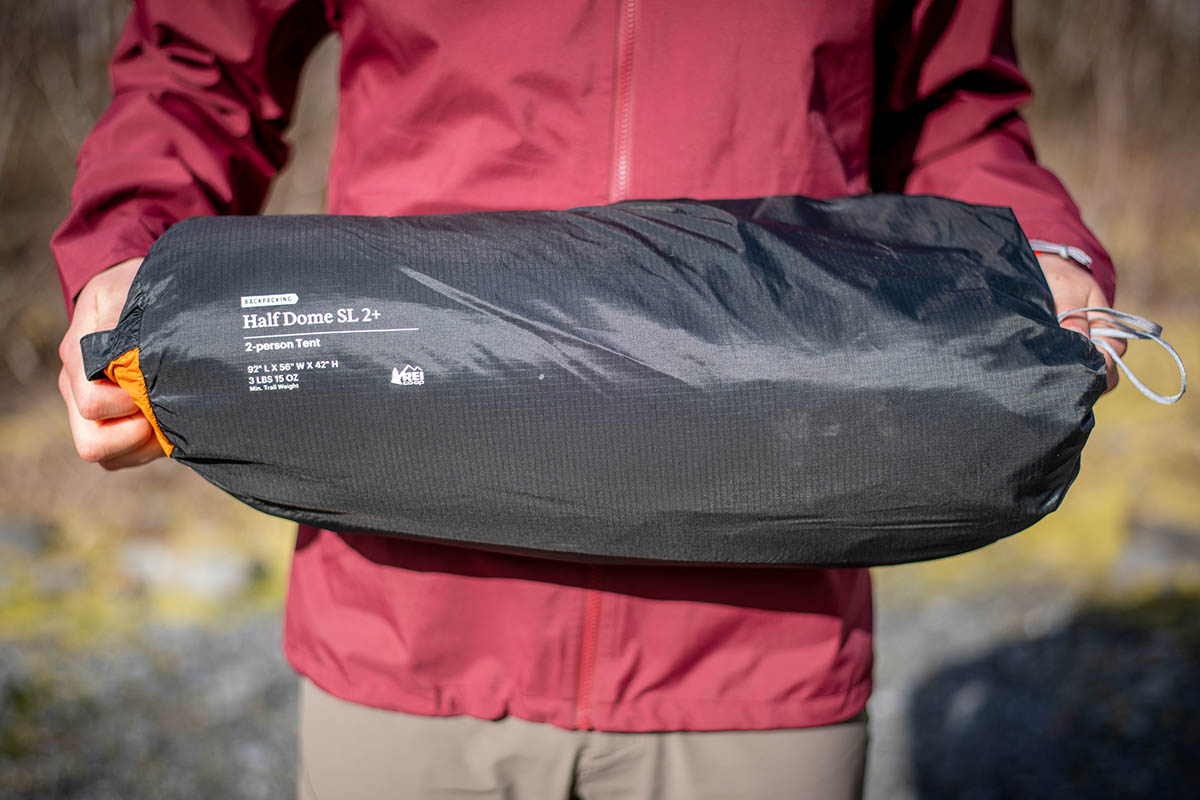
Backpacking gear is light for a reason and always requires some care, but the REI Co-op Half Dome SL 2+ is among the tougher tents on the market. With a substantial 40-denier (D) floor and 30D rainfly, it doesn’t require nearly as delicate of a touch as the 15 x 20D floor on the popular Big Agnes Copper Spur HV UL2, for example. Using the included footprint can help extend the life of your tent, but otherwise, there are very few areas of concern.
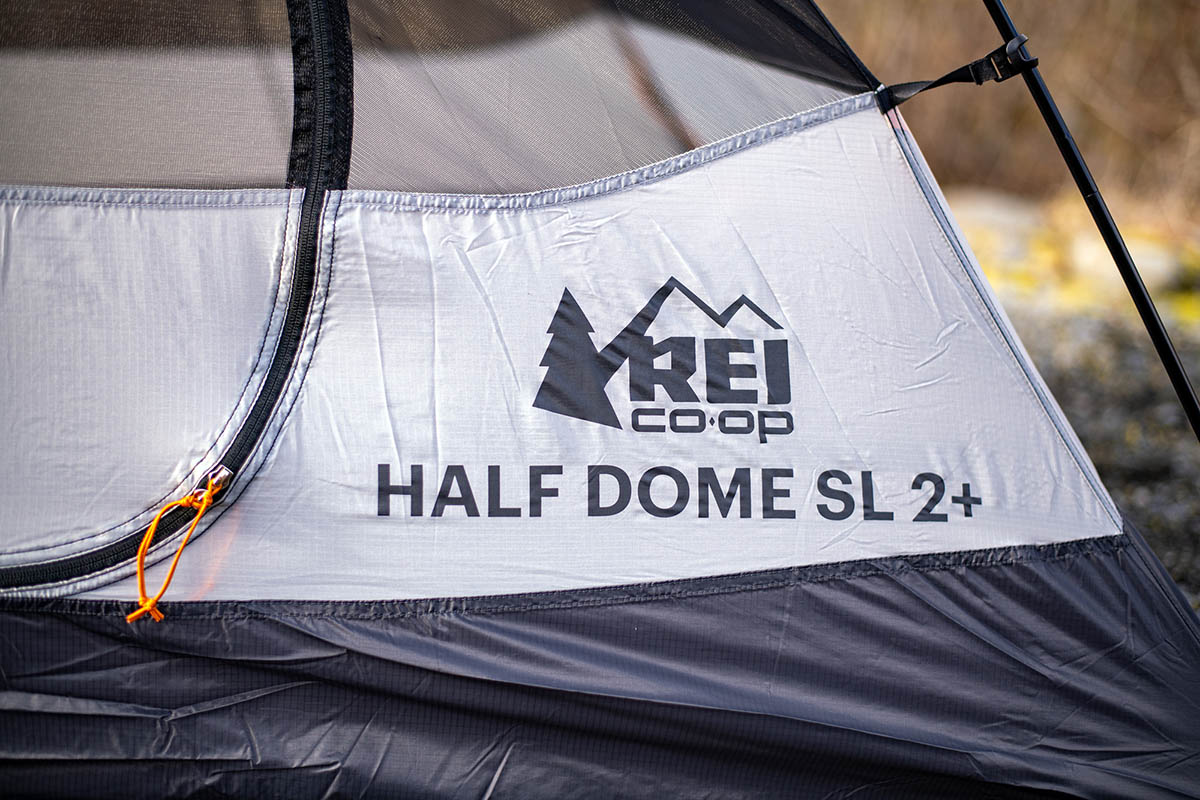
The rest of the Half Dome SL 2+ is equally well-built. The 20-denier mesh on the tent body is still snag-free, and the zippers all slide very smoothly. REI turned to industry leader DAC for their hubbed aluminum pole system, and it has a quality look and feel plus the hubs themselves are solid units (two generations ago, the Half Dome used cheaper plastic hubs, which had some durability issues). REI also upgraded the stakes to a DAC set, which is another positive change as we bent a number of the pegs that came with the old model.
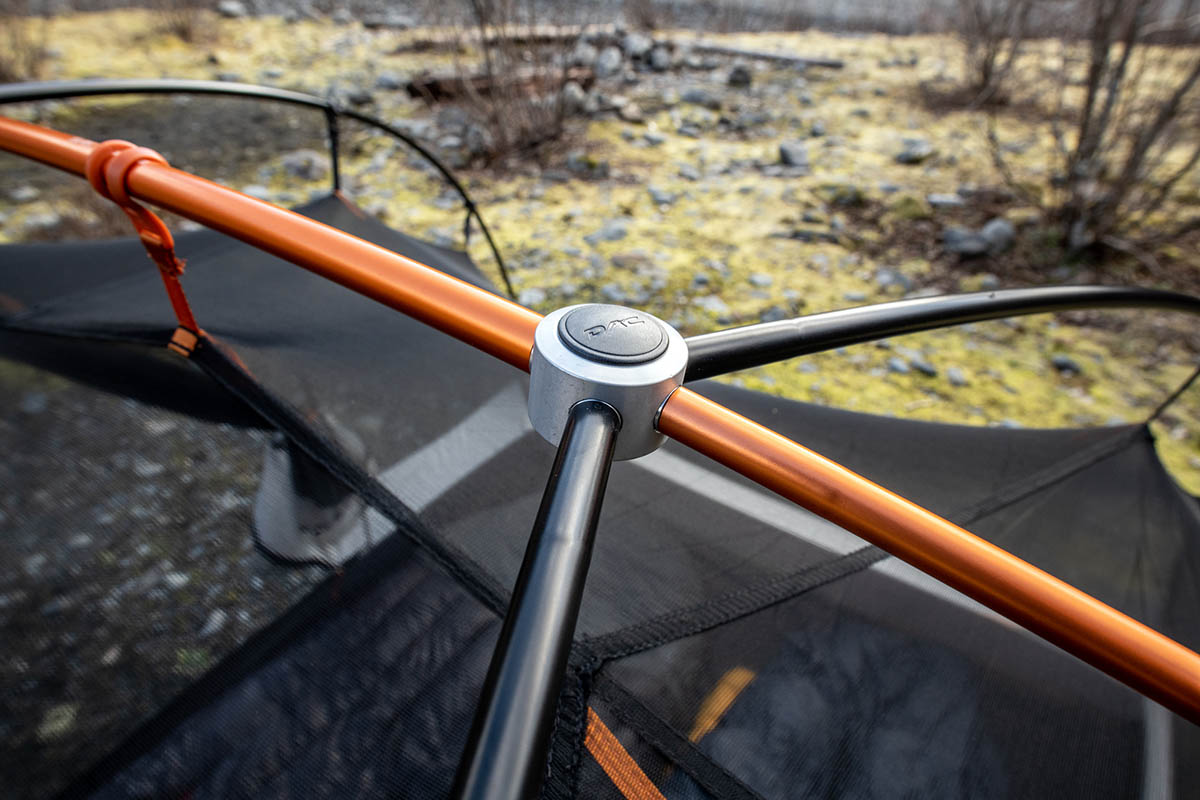
The Half Dome SL is equipped to handle most 3-season conditions with its sturdy, freestanding construction, full-coverage rainfly, and raised bathtub floor with quality seam taping. In proper summertime storms, it's held up well in rain, light wind, and sleet (as long as we remembered to close the roof vents if the rain was blowing sideways). That said, the tent’s tall profile makes it more vulnerable to bowing in high winds (an issue we had when testing the prior-gen Half Dome in Patagonia). For increasing weather worthiness, it’s wise to pack extra stakes to guy it out, as only eight are included.
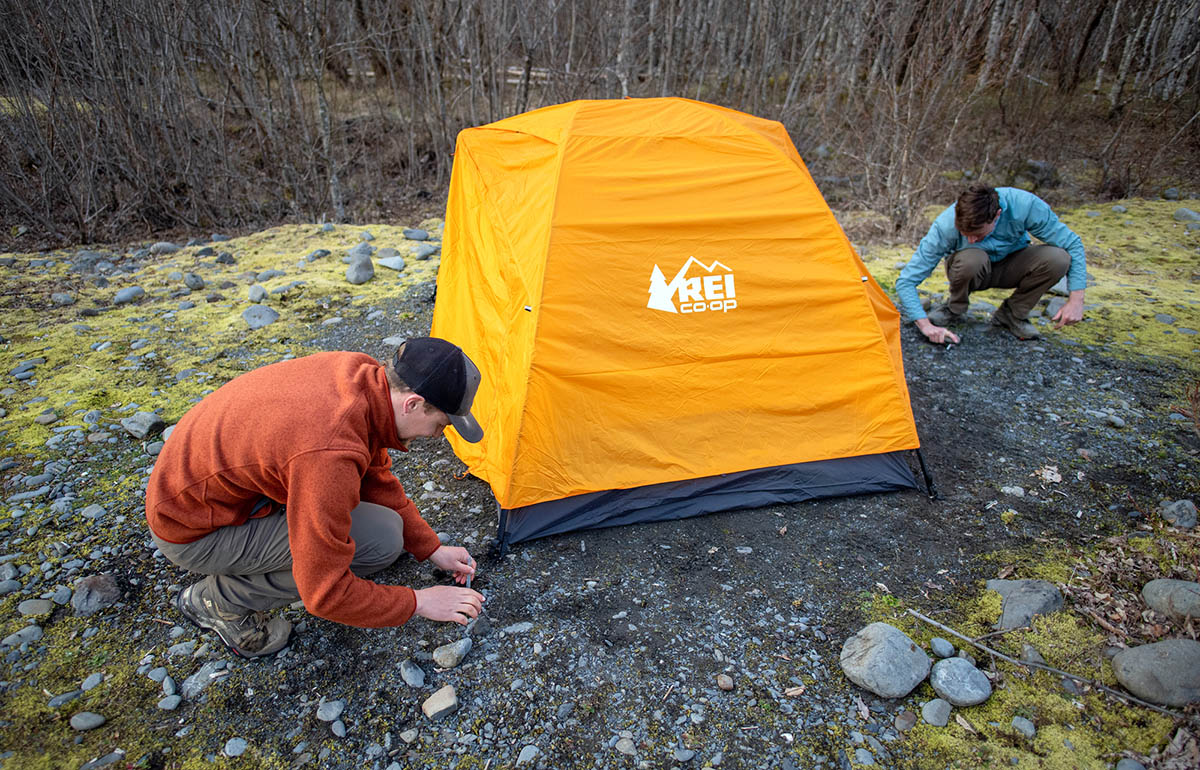
With large vents, lots of mesh, and enough space separating the rainfly and tent body, the REI Half Dome SL 2+ is a good ventilator. The vents are nicely designed and easy to access right over the side doors, and the Velcro tabs create a generous opening (and are simple to close). This means that you can get some serious air movement for keeping condensation to a minimum on muggy nights. In the cold—temperatures dipped into the mid-20s for us overnight—we did notice that the extra airflow made it feel a bit drafty inside, but closing one of the vents helped with that issue (and we still woke up with a dry interior).
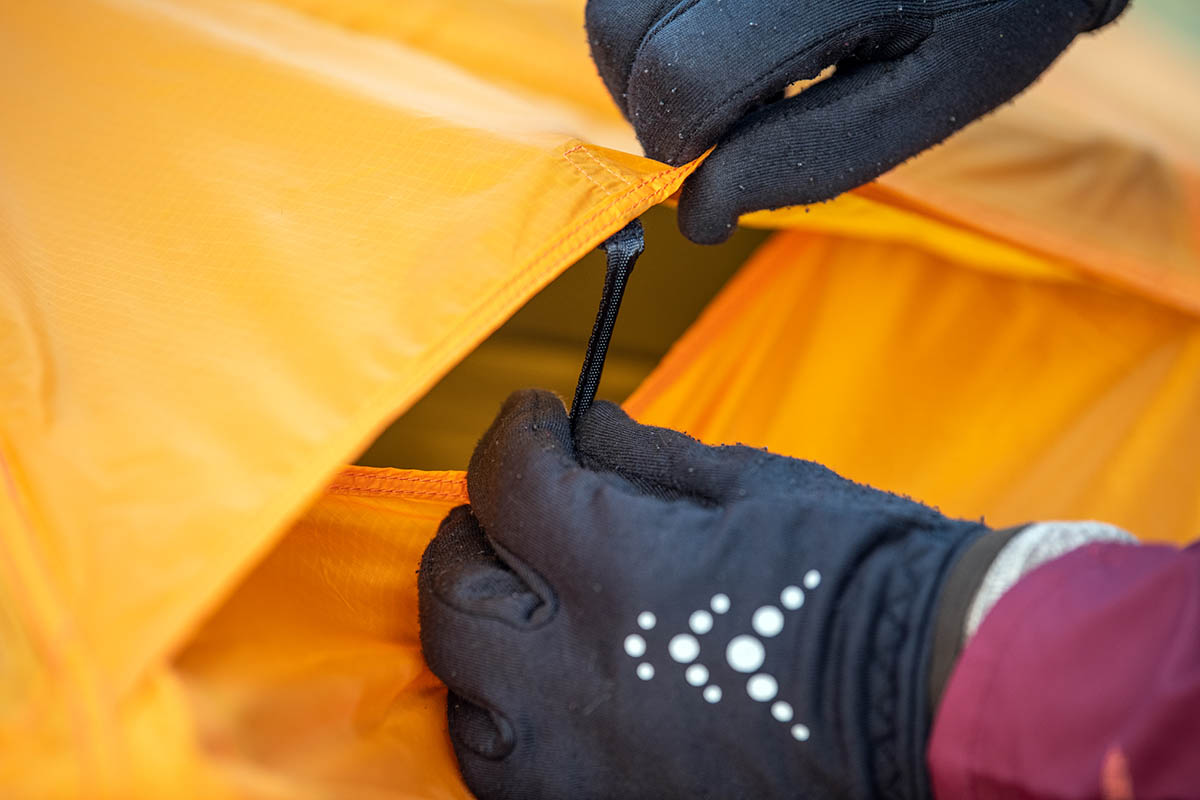
The Half Dome’s two-door-and-vestibule design means it’s easy for two people to store their packs, hiking shoes, and other gear on either side of the tent with plenty of room for entry and exit. Like the old Half Dome model, the SL has 22.5 square feet of space, split evenly between the sides. We also love the zipper design on the fly that opens to the side and down, creating a wide and protected opening for getting in and out. In addition, the rainfly is very adaptable: you can roll the ends halfway up for stargazing, pull the sides back to increase airflow, or zip it all up to protect your gear in rough weather.
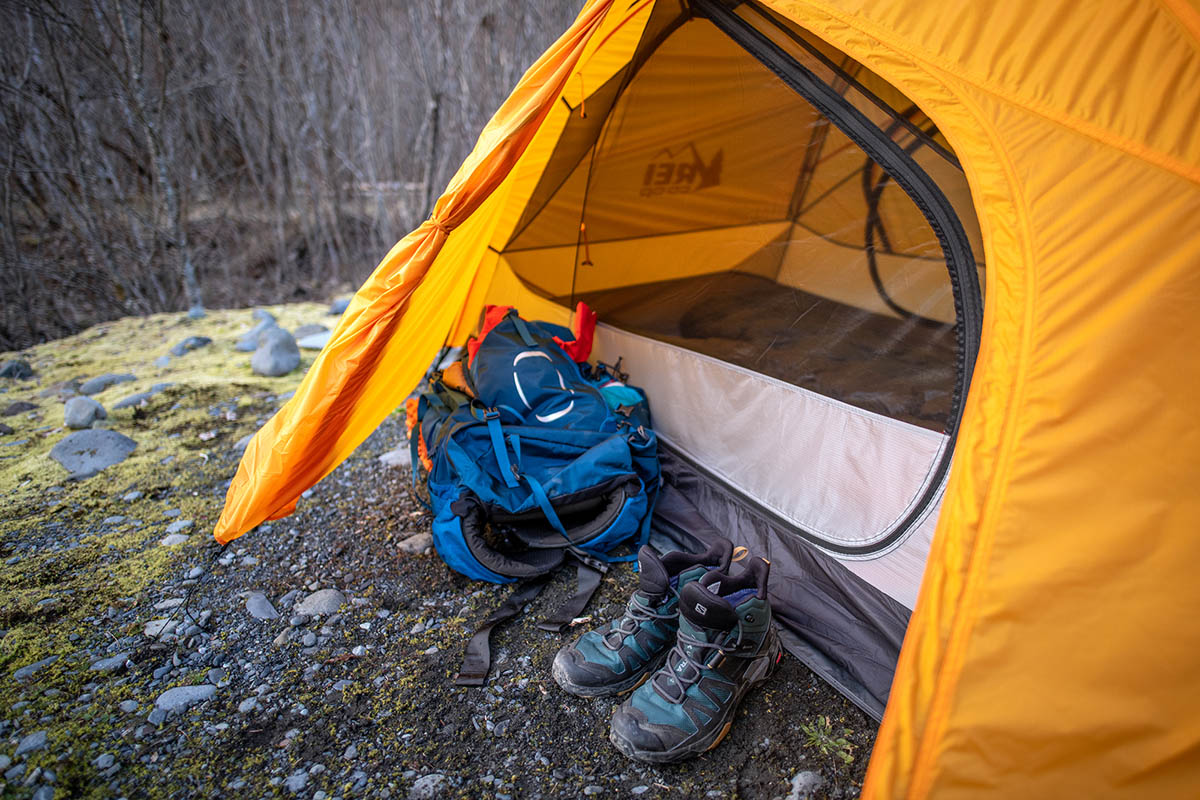
Storage is a little more limited with the latest SL version—one sacrifice in trimming weight—but it’s still sufficient for two backpackers. Just inside the doors are large pockets along the roof, and you also get triangle-shaped mesh pockets at each corner for easy access while in your sleeping bag. Finally, there are plenty of loops along the ceiling for hanging a light for a nighttime game of cards.
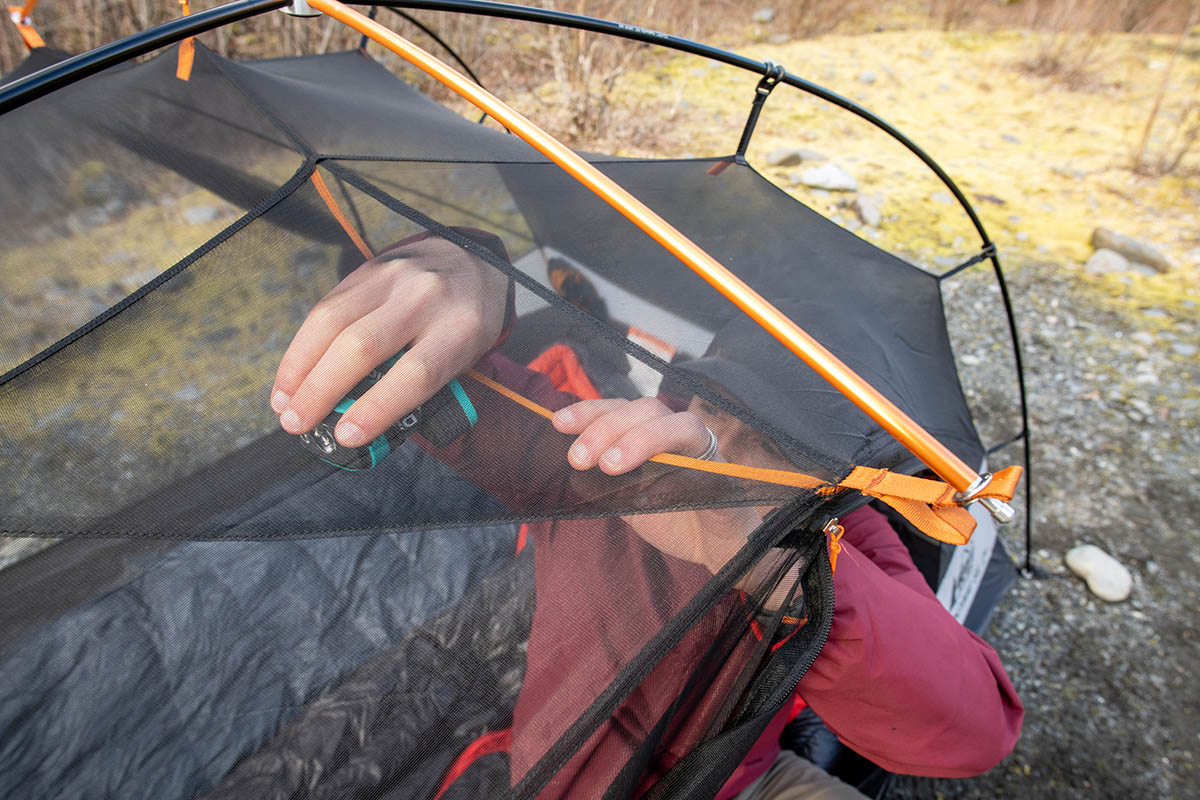
The freestanding tent body, symmetrical design, and one-piece hubbed pole makes the REI Co-op Half Dome SL 2+ incredibly easy to assemble and take down. As long as you line up the poles correctly (with the gold ridgepole across the middle of the tent), it’s as easy as connecting the four corners, clipping it all together, and connecting the ridgepole. Heck, even the footprint comes connected to the bottom of the tent body, so you can just leave it there (removing it is also a simple process). Adding the rainfly is just as painless, although we did find that it’s a good idea to connect the ridgepole’s grommets before buckling the rainfly into the bottom, which keeps from having to strain to make it fit. REI also includes setup instructions on the tent bag, but it’s a process that you will have down pat after very little practice.
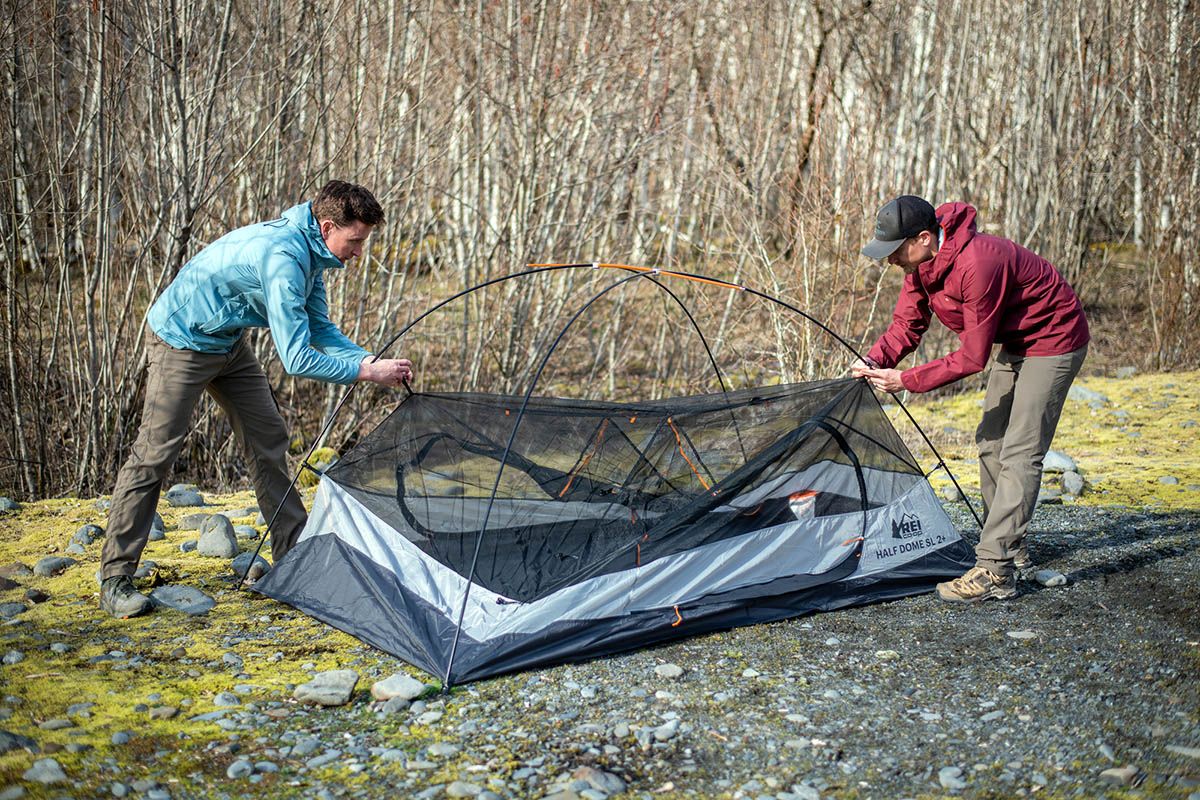
In addition to the SL 2+ model tested here, REI also makes the Half Dome in a larger SL 3+ version. The 3+ model costs $379, weighs 5 pounds 11.7 ounces all in, has 48.7 square feet of floor area and a 44-inch peak height, and packs down to 7 x 23 inches. As we touched on above, those who like to spread out will likely benefit from upgrading to the three-person model, although we do miss the old 4P option for use on more casual car camping trips. And REI also did away with the single-person Half Dome, although it wasn’t much of a standout in terms of weight (one of the main reasons backpackers choose 1P models in the first place).
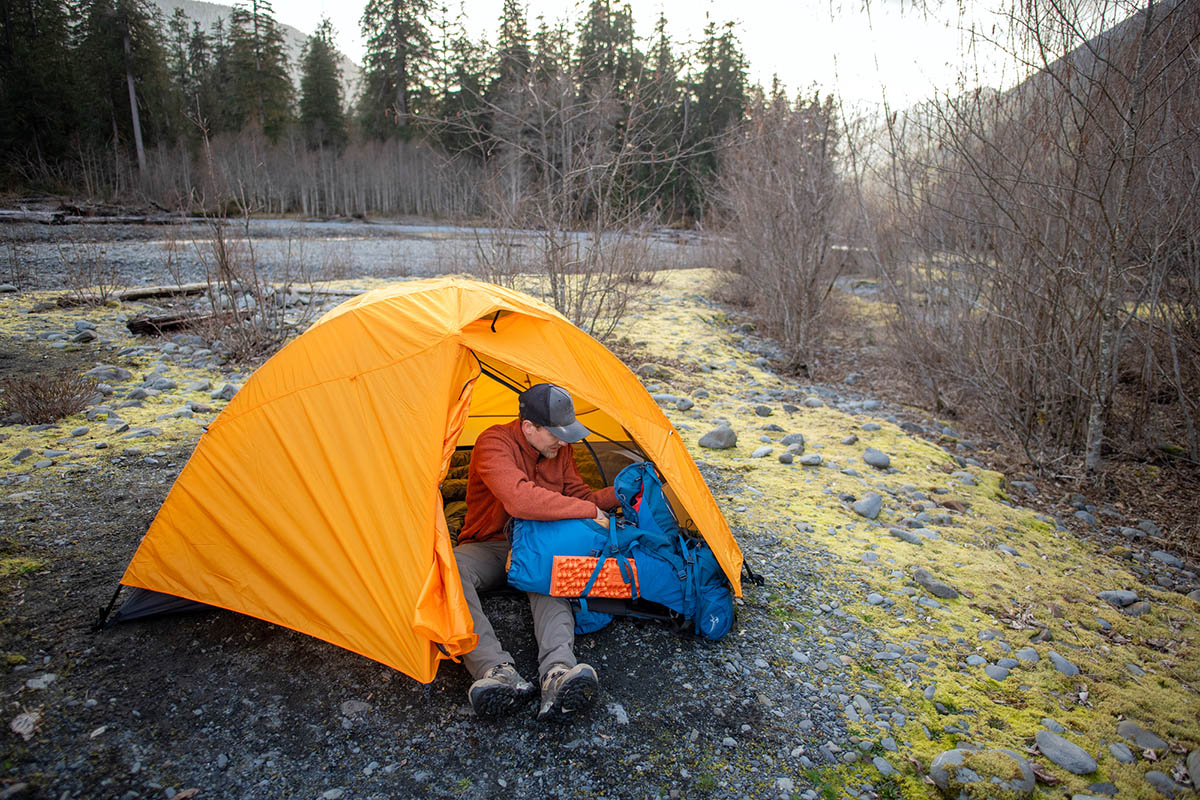
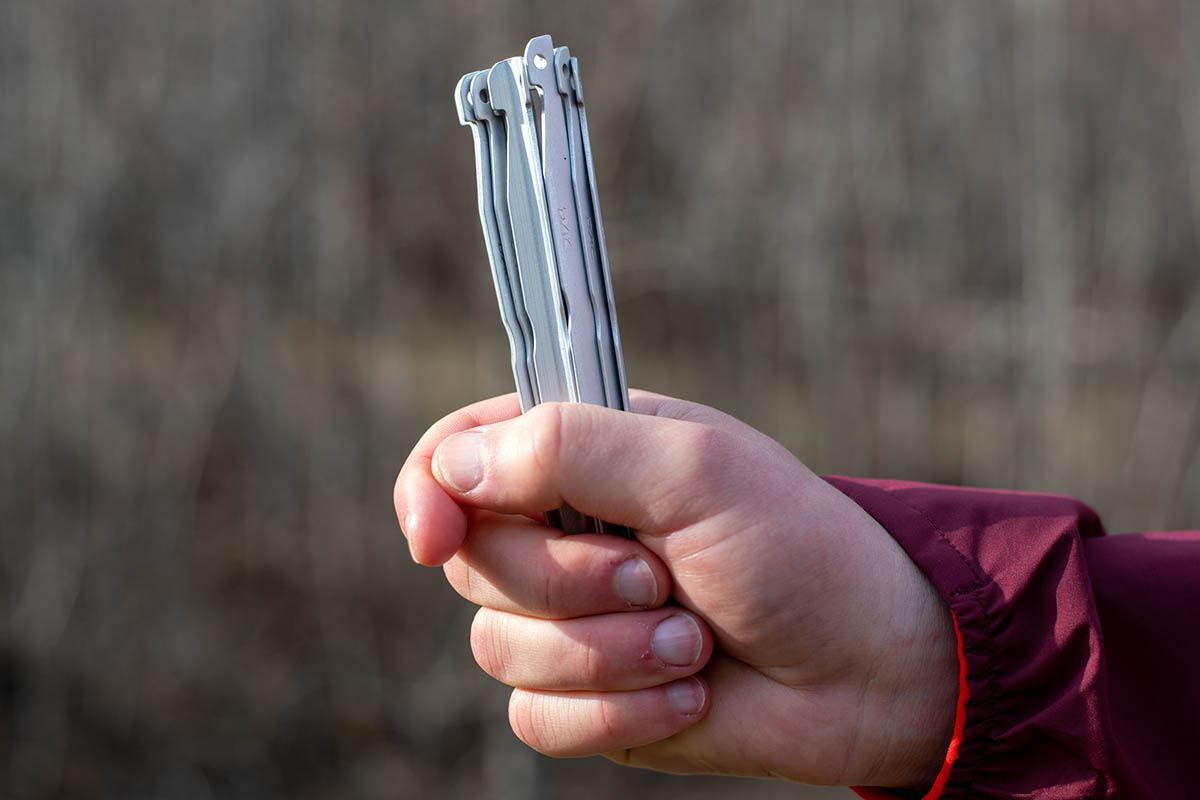
| TENT | PRICE | WEIGHT | Floor | Area | Height | Door(s) | Capacities |
|---|---|---|---|---|---|---|---|
| REI Co-op Half Dome SL 2+ | $329 | 4 lb. 11.5 oz. | 40D | 33.7 sq. ft. | 42 in. | 2 | 2P, 3P |
| MSR Elixir 2 | $320 | 6 lb. | 70D | 29 sq. ft. | 40 in. | 2 | 1P, 2P, 3P, 4P |
| Marmot Tungsten 2P | $249 | 5 lb. 14.2 oz. | Unavail. | 30.1 sq. ft. | 42.1 in. | 2 | 1P, 2P, 3P, 4P |
| REI Co-op Trail Hut 2 | $229 | 5 lb. 15 oz. | 66D | 31.7 sq. ft. | 40 in. | 2 | 2P, 4P |
| Nemo Aurora 2P | $300 | 5 lb. 7 oz. | 68D | 31.8 sq. ft. | 44 in. | 2 | 2P, 3P |
| Big Agnes Salt Creek 2P | $350 | 4 lb. 1 oz. | Unavail. | 28 sq. ft. | 44 in. | 3 | 2P, 3P |
The REI Co-op Half Dome SL 2+ successfully builds on its predecessor and remains at the top of the heap in the sub-$350 backpacking tent category. A strong competitor is MSR’s Elixir 2 tent, which shares a similar design to their core Hubba Hubba, but with a wallet-friendlier build, more durable materials (including a 70D floor and 68D fly), and a roomier interior. Moreover, at $320 with the footprint included, it’s only $9 more than the Half Dome SL 2+. If you want the extra privacy and increased warmth and wind protection that comes with the Elixir’s solid fabric on the tent body, the MSR is a good buy. But the Half Dome is larger in every dimension and weighs over 1 pound less, which is a pretty hard-to-beat combination.
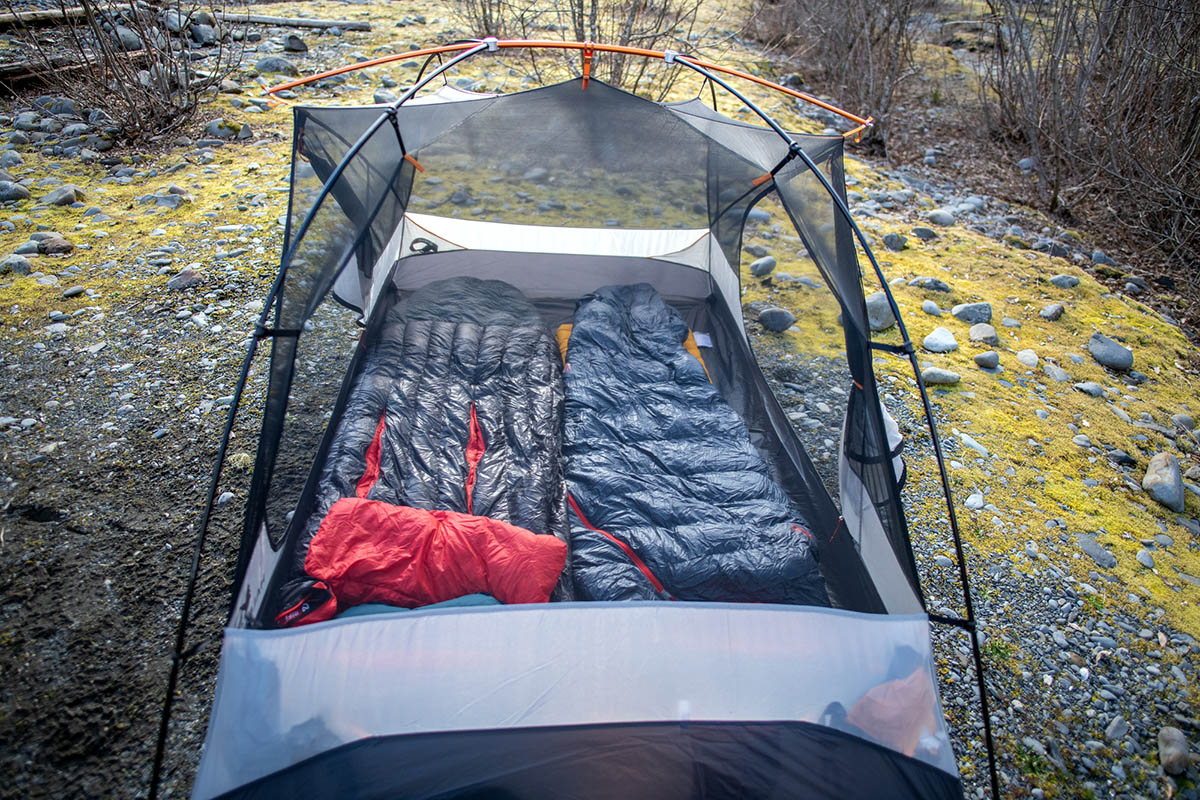
Marmot’s Tungsten 2 is another budget-oriented design from a reputable tent brand. Where the Tungsten gets the clear edge over the Half Dome is value: at $249 including the footprint, it undercuts the Half Dome by a considerable $80 while remaining pretty competitive in terms of floor area (30.1 sq. ft.) and weight (5 lbs. 14.2 oz. all in). But given the choice, we’d stretch the budget to the Half Dome. It’s more spacious inside, has larger and better-designed vestibules, and is made with higher-quality materials overall. Unless you’re on a strict budget and can’t wait for one of REI’s coupons to bring down the cost, we prefer the Half Dome.
Within REI’s own lineup, their budget Trail Hut 2 tent is a solid option for new or infrequent backpackers. For $199 (footprint included), you get a freestanding setup with similar features including two large doors, ample storage, center ridge pole to open up the interior, and a durable build. That said, the Half Dome SL 2+ is a roomier option both in terms of floor area and peak height, plus it's over 1 pound lighter. All told, the Trail Hut is an undeniable value (for more, see our in-depth Trail Hut review), but we think the $130-pricier Half Dome is worth the investment for those who get outside regularly.
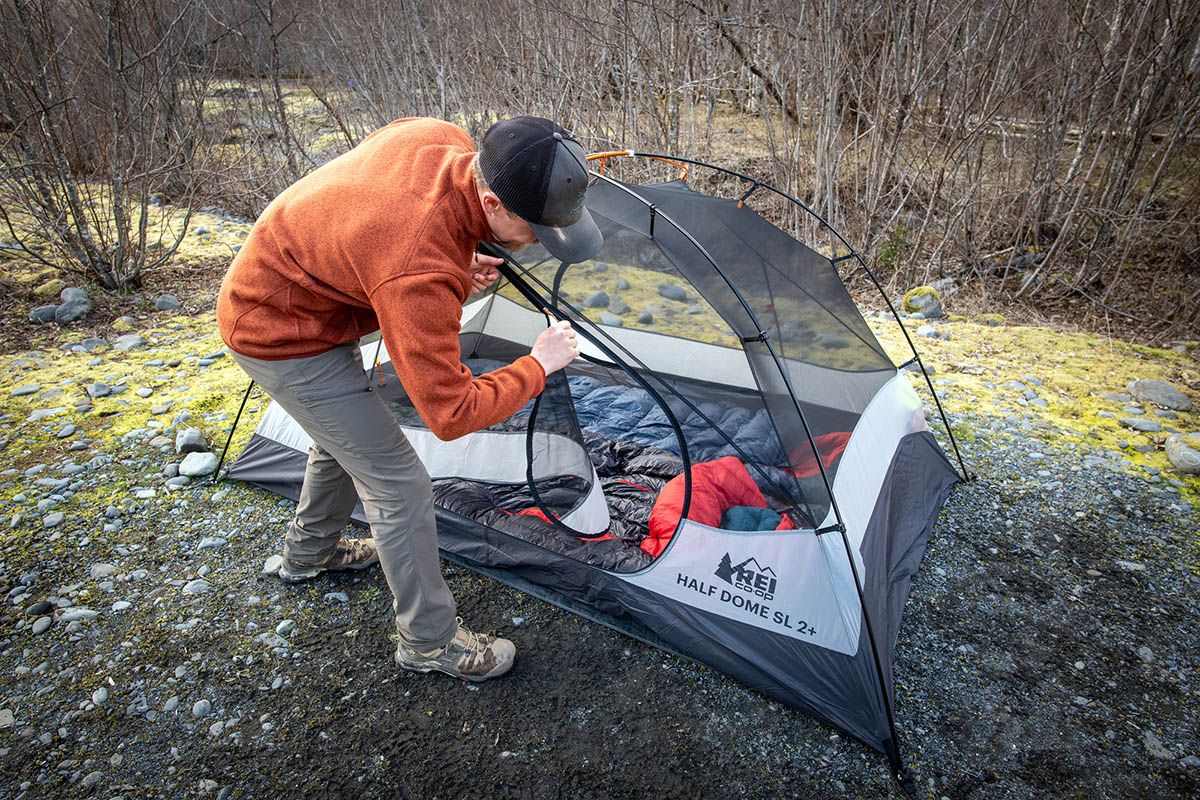
Nemo's Aurora 2P follows a similar recipe as the Half Dome with a competitively low price ($300), durable build (68D on the floor), and near-vertical walls. The Aurora doesn't weigh all that much more (5 lbs. 7 oz.), and it even gets the edge in peak height at a truly tall 44 inches (this makes it a decent option for crossover car camping use). However, the REI has a bigger interior in terms of floor area, and its vestibules are larger (22.5 sq. ft. vs. 18.4 for the Nemo). All things considered, it’s simply hard to match the Half Dome’s weight and livability.
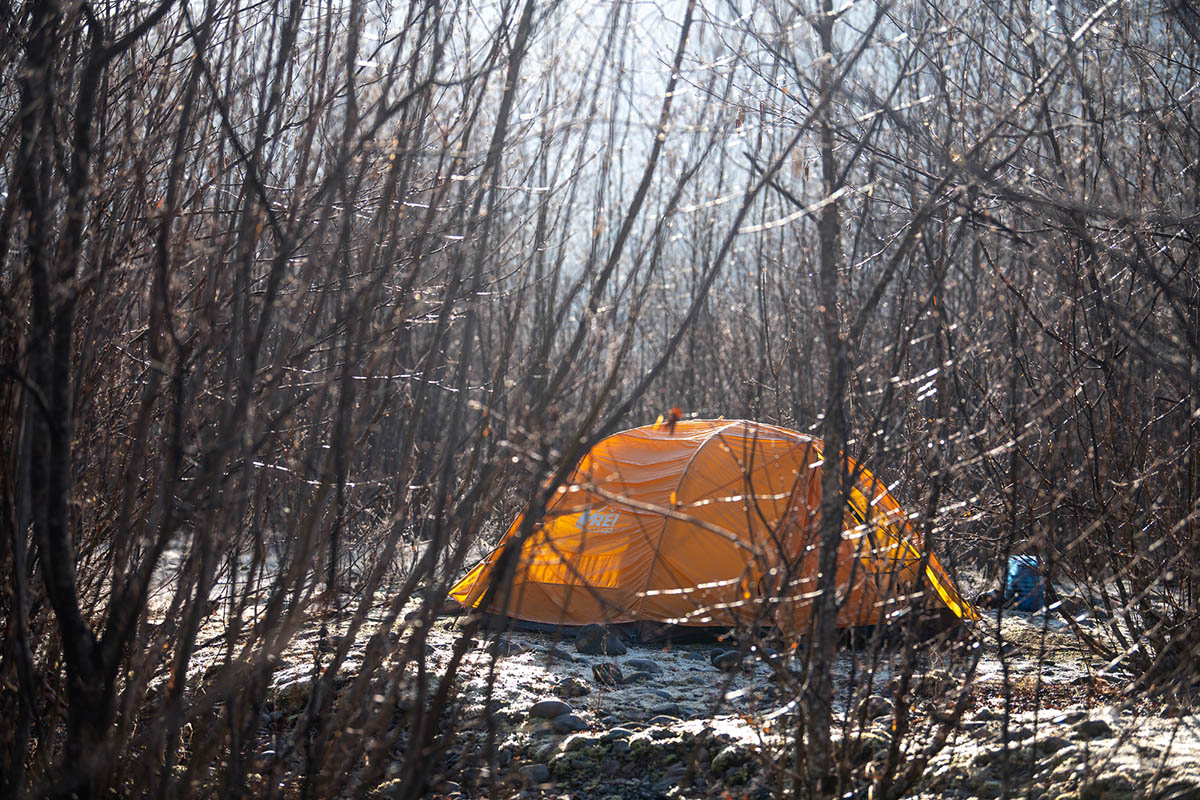
A final alternative to consider is Big Agnes' Salt Creek SL2, which a goo example of the weight you can save by stepping up in price. At $350 and 4 pounds 1 ounce all in, the Big Agnes undercuts the Half Dome by over 10 ounces without compromising in durability. However, you do sacrifice roominess with a snugger interior (a relatively tight 28 sq. ft.), and its asymmetrical floor tapers at one end, which makes it harder for two campers to sleep head-to-toe. Unless the increase in weight is a deal breaker for you, we consider the Half Dome the more well-rounded option.
Editor’s note: We usually provide a live price comparison table below our outdoor gear reviews, but the Half Dome is sold exclusively by REI Co-op. You can see the Half Dome SL 2+ page here and support us in the process. Thanks!